Myron G. Best1405105887, 9781405105880
This book is designed to give students a balanced and comprehensive coverage of these new advances, as well as a firm grounding in the classical aspects of igneous and metamorphic petrology. The emphasis throughout is on the processes controlling petrogenesis, but care is taken to present the important descriptive information so crucial to interpretation. One of the most up-to-date synthesis of igneous and metamorphic petrology available. Emphasis throughout on latest experimental and field data. Igneous and metamorphic sections can be used independently if necessary.
Table of contents :
IGNEOUS AND METAMORPHIC PETROLOGY……Page 3
CONTENTS……Page 7
PREFACE……Page 21
CHAPTER 1 Overview of Fundamental Concepts……Page 25
1.1.1 Forms of Energy……Page 26
1.1.3 Heat Flow in the Earth……Page 27
1.1.4 Implications of Mantle Convection……Page 32
1.1.5 Energy Budget of the Earth……Page 33
1.3 ROCK-FORMING PROCESSES AS CHANGING STATES OF GEOLOGIC SYSTEMS……Page 34
1.4 ROCK PROPERTIES AND THEIR SIGNIFICANCE……Page 35
1.4.1 Composition……Page 36
1.4.2 Field Relations……Page 37
1.5 HOW PETROLOGISTS STUDY ROCKS……Page 38
2.1.1 Sampling……Page 40
2.1.2 Analyses……Page 41
2.2.1 Glass……Page 46
2.3.1 Variation Diagrams……Page 47
2.3.2 Continuous Spectrum of Rock Compositions……Page 48
2.4 CLASSIFICATION OF MAGMATIC ROCKS……Page 49
2.4.2 Classification Based on Field Relations……Page 51
2.4.3 Classification Based on Mineralogical and Modal Composition……Page 52
2.4.4 Classification Based on Whole-Rock Chemical Composition……Page 54
2.4.5 Rock Suites……Page 59
2.5 TRACE ELEMENTS……Page 61
2.5.1 Partition Coefficients and Trace Element Compatibility……Page 62
2.5.2 Rare Earth Elements……Page 64
2.5.3 Other Normalized Trace Element Diagrams……Page 66
2.6.1 Stable Isotopes……Page 68
2.6.2 Radiogenic Isotopes……Page 69
2.6.3 Cosmogenic Isotopes: Beryllium……Page 71
3.1 WHY IS THERMODYNAMICS IMPORTANT?……Page 75
3.2.1 Thermodynamic States, Processes, and State Variables……Page 76
3.2.3 Enthalpy……Page 77
3.2.4 Entropy and the Second and Third Laws of Thermodynamics……Page 78
3.2.5 Gibbs Free Energy……Page 79
3.3 STABILITY (PHASE) DIAGRAMS……Page 80
3.3.1 Slope of the Melting Curve……Page 81
3.3.2 Determination of Phase Diagrams……Page 82
3.4.2 Partial Molar Volume……Page 83
3.4.3 Partial Molar Gibbs Free Energy: The Chemical Potential……Page 84
3.5.1 Fugacity and Activity……Page 85
3.5.2 Equilibrium Constants……Page 86
3.5.3 Silica Activity, Silica Buffers, and Silica Saturation……Page 87
3.5.4 Oxygen Buffers……Page 88
3.6 KINETICS……Page 90
3.6.1 Activation Energy……Page 91
3.6.2 Overstepping and Metastable Persistence and Growth……Page 92
4.1 NATURE OF MAGMA……Page 96
4.1.1 Atomic Structure of Melts……Page 97
4.2.1 Nature of Volatiles……Page 99
4.2.2 Solubilities of Volatiles in Silicate Melts……Page 100
4.2.3 Exsolution of Volatiles from a Melt……Page 103
4.3.1 Explosive Volcanism……Page 104
4.3.2 Global Atmosphere and Climate……Page 106
4.3.3 Fumaroles, Hydrothermal Solutions, Ore Deposits, and Geothermal Reservoirs……Page 108
5.1.1 Phase Rule……Page 111
5.2.2 Melting of a Pure Mineral in the Presence of Volatiles……Page 113
5.3.1 Basic Concepts: CaMgSi2O6 (Di)-CaAl2Si2O8 (An) System at P 1 atm……Page 114
5.3.2 Mg2SiO4-SiO2 System at 1 atm……Page 117
5.4.1 Makaopuhi Basalt……Page 122
5.4.2 Basalt Magmas at High Pressures and High Water Concentrations……Page 123
5.5.1 KAlSi3O8 (Kf)-CaAl2Si2O8 (An) Binary System: Limited Solid Solution……Page 124
5.5.2 NaAlSi3O8 (Ab)-CaAl2Si2O8 (An) Binary Plagioclase System: Complete Solid Solution……Page 125
5.5.3 NaAlSi3O8 (Ab)-KAlSi3O8 (Kf) Binary Alkali Feldspar System……Page 126
5.5.4 KAlSi3O8 (Kf)-NaAlSi3O8 (Ab)-CaAl2Si2O8 (An) Ternary Feldspar System……Page 128
5.5.5 KAlSi3O8 (Kf)-NaAlSi3O8 (Ab)-SiO2 (silica)-H2O: The Granite System……Page 132
5.6 CRYSTAL-MELT EQUILIBRIA INVOLVING ANHYDROUS MAFIC MINERALS: OLIVINE AND PYROXENE……Page 136
5.7.1 Equilibria in the Granodiorite-Water System……Page 137
5.7.2 Equilibria Involving Melt and Micas and Amphiboles……Page 138
5.8.1 Assessing States of Equilibrium in Rocks……Page 141
5.9 A BRIEF COMMENT REGARDING SUBSOLIDUS REACTIONS IN MAGMATIC ROCKS……Page 142
6.1 VISCOSITY OF MELTS……Page 146
6.2.1 Types of Diffusion……Page 150
6.2.2 Theory and Measurement……Page 151
6.2.3 Factors Governing Diffusivities……Page 152
6.2.5 Soret Diffusion……Page 153
6.3 DIFFUSION OF HEAT……Page 154
6.4 INTERFACIAL ENERGY……Page 155
6.5.2 Nucleation……Page 157
6.5.3 Crystal Growth……Page 159
6.5.4 Crystal Size in Magmatic Rocks……Page 161
6.6.1 Crystal Dissolution……Page 163
6.6.2 Textural Equilibration: Grain Boundary Modification……Page 164
6.7.1 Nucleation and Growth of Bubbles—Vesiculation……Page 166
6.7.2 Melt Fragmentation and Explosive Volcanism……Page 169
CHAPTER 7 Kinetic Paths and Fabric of Magmatic Rocks……Page 172
7.1.1 Glassy Texture……Page 175
7.1.2 Aphanitic Texture……Page 177
7.1.3 Phaneritic Texture……Page 179
7.1.4 Porphyritic Texture……Page 181
7.2 FABRICS RELATED TO CRYSTALLIZATION PATH: GRAIN SHAPE……Page 182
7.3.2 Reaction Rims……Page 184
7.3.3 Subsolidus Decomposition and Exsolution in Unstable Minerals……Page 185
7.4 FABRIC RELATED TO TEXTURAL EQUILIBRATION: SECONDARY GRAIN-BOUNDARY MODIFICATION……Page 186
7.5.1 Magmatic Rock Texture and Order of Crystallization……Page 187
7.6 FABRICS RELATED TO NONEXPLOSIVE EXSOLUTION OF VOLATILE FLUIDS……Page 189
7.7 VOLCANICLASTIC FABRICS RELATED TO FRAGMENTATION OF MAGMA……Page 190
7.7.1 Pyroclastic Processes……Page 191
7.7.2 Autoclastic Processes……Page 193
7.9.1 Descriptive Geometric Aspects……Page 195
7.9.2 Origin……Page 199
7.10 INCLUSIONS……Page 205
8.1.1 Concepts of Stress……Page 207
8.1.2 Deformation……Page 208
8.1.3 Ideal Response to Stress……Page 209
8.2 RHEOLOGY OF ROCKS AND MAGMAS……Page 210
8.2.1 Rheology of Rocks……Page 211
8.2.2 Non-Newtonian Rheology of Magma……Page 214
8.2.3 Deformation and Flow of Magma……Page 215
8.3.1 Density Determinations……Page 218
8.3.2 Densities of Minerals and Melts……Page 219
8.3.3 Buoyancy……Page 220
8.4 CONDUCTIVE HEAT TRANSFER……Page 221
8.4.1 Conductive Cooling Models……Page 222
8.5 ADVECTIVE HEAT TRANSFER……Page 223
8.6.1 Thermal Convection in a Completely Molten Body of Melt……Page 225
8.6.2 Thermochemical Convection in Crystallizing Magmas……Page 227
8.6.3 Replenishment in Evolving Magma Chambers……Page 229
9.1.1 Neutral Buoyancy and the Crustal Density Filter……Page 234
9.1.2 Magma Overpressure……Page 236
9.2.1 Description and Terminology……Page 237
9.2.2 Some Thermomechanical Concepts Pertaining to Emplacement of Sheet Intrusions……Page 240
9.2.3 Geometry and Orientation of Sheet Intrusions……Page 242
9.2.4 Basalt Diking in Extensional Regimes……Page 244
9.3 DIAPIRS……Page 246
9.4 MAGMA EMPLACEMENT IN THE CRUST: PROVIDING THE SPACE……Page 248
9.4.1 Some Aspects of Granitic Plutons……Page 249
9.4.2 Emplacement Processes and Factors……Page 250
9.4.3 The Intrusion–Host Rock Interface……Page 260
10.1 OVERVIEW OF EXTRUSION: CONTROLS AND FACTORS……Page 265
10.1.2 Two Types of Extrusions: Explosive and Effusive……Page 266
10.2.1 Types of Basaltic Lava Flows……Page 269
10.2.2 Columnar Joints……Page 273
10.2.3 Subaerial Lava Accumulations……Page 274
10.2.4 Submarine Basaltic Accumulations……Page 276
10.3.1 Morphological Characteristics and Growth……Page 278
10.3.2 Internal Fabric……Page 280
10.4.1 Explosive Mechanisms: Production of Pyroclasts……Page 283
10.4.3 Pyroclast Transport and Deposition……Page 286
10.4.4 Explosive Style……Page 291
10.4.5 Pyroclastic Flows and Deposits: Overview……Page 294
10.4.7 Ignimbrite-Forming Ash Flows……Page 295
10.4.8 Calderas……Page 299
10.4.9 Subaqueous Pyroclastic Flows……Page 301
10.5.2 Volcanic Debris Flows: Lahars……Page 302
10.5.3 Composite Volcanoes……Page 303
11.1 MELTING OF SOLID ROCK: CHANGES IN P, T, AND X……Page 307
11.1.1 Temperature Increase, + T……Page 308
11.1.2 Decompression, – P……Page 310
11.1.3 Changes in Water Concentration, + Xwater……Page 311
11.2 MANTLE SOURCE ROCK……Page 312
11.2.1 Mantle-Derived Inclusions……Page 313
11.2.2 Metasomatized and Enriched Mantle Rock……Page 315
11.3.1 Equilibrium (Batch) Partial Melting of Lherzolite……Page 319
11.3.3 Factors Controlling Partial Melt Composition……Page 321
11.3.4 Modeling Partial Melting Using Trace Elements……Page 323
11.4 MAGMA GENERATION IN SUBARC MANTLE WEDGE……Page 324
11.4.1 Dehydration of Subducting Oceanic Crust……Page 325
11.4.2 Magma Generation in the Mantle Wedge……Page 327
11.4.3 Partial Melting of Subducted Basaltic Oceanic Crust: Adakite……Page 329
11.5 GENERATION OF ALKALINE MAGMAS IN METASOMATICALLY ENRICHED MANTLE PERIDOTITE……Page 330
11.5.1 The Metasomatized Mantle Connection……Page 331
11.6 MAGMA GENERATION IN THE CONTINENTAL CRUST……Page 332
11.6.1 Partial Melting of Continental Source Rocks……Page 333
11.6.2 “Alphabet” Granitic Magmas: Contrasting Sources……Page 335
11.6.3 Crystalline Residues……Page 336
11.6.5 Felsic Magma Generation and the Mantle Connection……Page 337
CHAPTER 12 Differentiation of Magmas……Page 340
12.1 USING VARIATION DIAGRAMS TO CHARACTERIZE DIFFERENTIATION PROCESSES……Page 341
12.2.1 Crystal-Melt Fractionation……Page 342
12.2.2 Physical Separation of Immiscible Melts……Page 346
12.2.3 Fluid-Melt Separation: Pegmatites……Page 348
12.3.1 Magma Mixing……Page 349
12.3.2 Assimilation……Page 352
12.4.1 Palisades Sill……Page 353
12.4.2 Layered Intrusions……Page 355
12.4.3 Oceanic-Ridge Magma Chambers……Page 361
12.5 ORIGIN OF THE CALC-ALKALINE DIFFERENTIATION TREND……Page 362
12.5.2 Factors Controlling Development of the Calc-Alkaline Trend……Page 363
CHAPTER 13 Magmatic Petrotectonic Associations……Page 372
13.1 OCEANIC SPREADING RIDGES AND RELATED BASALTIC ROCKS……Page 373
13.1.1 Mid-Ocean Ridge Basalt (MORB)……Page 374
13.1.2 Iceland……Page 377
13.2 MANTLE PLUMES AND OCEANIC ISLAND VOLCANIC ROCKS……Page 378
13.2.1 Character of Volcanic Rocks……Page 380
13.2.2 Hawaiian Islands: Tholeiitic and Alkaline Associations……Page 383
13.2.3 Highly Alkaline Rocks on Other Oceanic Islands……Page 386
13.3.1 Oceanic Plateaus……Page 388
13.3.2 Continental Flood Basalt Plateaus……Page 389
13.3.3 Continental Breakup……Page 393
13.4 ARC MAGMATISM: OVERVIEW……Page 394
13.5 OCEANIC ISLAND ARCS……Page 395
13.5.1 Rock Associations……Page 396
13.5.2 Magma Evolution……Page 398
13.5.3 Back-Arc Basins……Page 399
13.6.1 Characteristics……Page 400
13.7 CALC-ALKALINE CONTINENTAL MARGIN MAGMATIC ARCS……Page 401
13.7.1 Volcanic Arcs on Continental Margins……Page 402
13.7.2 Plutonic Arcs on Continental Margins: Granitic Batholiths……Page 406
13.8 GRANITES IN CONTINENT-CONTINENT COLLISION ZONES……Page 410
13.9 ANOROGENIC A-TYPE FELSIC ROCKS……Page 411
13.9.1 Characteristics……Page 412
13.9.2 Petrogenesis……Page 413
13.10 GRANITES AND GRANITES……Page 414
13.11 CONTINENTAL RIFT ASSOCIATIONS: BIMODAL AND ALKALINE ROCKS……Page 416
13.11.1 Transitions from Continental Arc to Rift Associations in Western North America……Page 418
13.11.2 Magmatism in the East African Rift System……Page 419
13.12 ALKALINE ORPHANS, MOSTLY IN STABLE CRATONS……Page 421
13.12.2 Lamproite, Orangeite, and Kimberlite Clans……Page 422
CHAPTER 14 Metamorphic Rocks and Metamorphism: An Overview……Page 428
14.1.1 Incipient Metamorphism: Crystallization of New Minerals and Preservation of Relict Protolith Fabrics……Page 429
14.1.2 Recrystallization under Hydrostatic Conditions: Newly Imposed Granoblastic Fabric……Page 434
14.1.3 Recrystallization under Nonhydrostatic States of Stress: Tectonite Fabric……Page 438
14.1.4 Crystalloblastic Series……Page 445
14.1.5 Metasomatism……Page 446
14.2.1 The Nature of the Protolith……Page 448
14.2.3 Geologic Field Settings: Metamorphic Terranes……Page 450
14.2.4 Metamorphic Grade……Page 454
14.2.5 Metamorphic Zones……Page 455
14.2.6 Intensive Variables and Stable Mineral Assemblages……Page 460
14.2.7 Metamorphic Facies……Page 461
14.2.9 Metamorphic Field Gradients and P–T–t Paths……Page 462
14.3 WHY STUDY METAMORPHIC ROCKS? METAMORPHIC PETROLOGY AND CONTINENTAL EVOLUTION AND TECTONICS……Page 465
15.1 METAMORPHIC FABRICS……Page 471
15.1.1 Anisotropic Fabrics of Tectonites……Page 472
15.1.2 Summary List of Metamorphic Textures……Page 476
15.2.1 Metamorphic Rock Names Based on Fabric……Page 479
15.2.2 Strongly Foliated Rocks……Page 480
15.2.3 Weakly Foliated Rocks……Page 481
15.2.4 Nonfoliated Mafic Rocks……Page 484
15.2.5 Nonfoliated High-Grade Felsic Rocks……Page 485
15.2.6 Other Nonfoliated Metamorphic Rocks……Page 486
15.2.7 Serpentinite……Page 487
15.2.10 High-Strain-Rate Rocks in Fault and Shear Zones……Page 489
15.3.1 Fundamentals……Page 490
15.3.2 Examples of Composition Diagrams in Hypothetical Three-Component Systems……Page 491
15.3.3 Compatibility Diagrams for Metamorphic Rocks……Page 493
CHAPTER 16 Metamorphic Mineral Reactions and Equilibria……Page 497
16.1 EQUILIBRIUM MINERAL ASSEMBLAGES……Page 498
16.3 POLYMORPHIC TRANSITIONS……Page 499
16.3.1 The Al2SiO5 System……Page 500
16.4.1 Basic Relations in a System of Pure End-Member Phases……Page 503
16.4.2 Model Reactions in the Basalt–Granulite–Eclogite Transition……Page 505
16.5 CONTINUOUS REACTIONS BETWEEN CRYSTALLINE SOLID SOLUTIONS……Page 508
16.5.2 Continuous Exchange Reactions in Fe–Mg Solid Solutions……Page 509
16.6.1 Fluids in the Crust of the Earth……Page 512
16.6.2 Fundamental Concepts of Solid–Fluid Reactions……Page 515
16.6.3 Equilibria with Mixed-Volatile Fluids……Page 517
16.6.4 Local versus External Control of Fluid Composition during Devolatilization Reactions……Page 519
16.7.1 Evidence for Fluid Flow……Page 522
16.7.2 Mechanics of Fluid Flow……Page 524
16.8.1 Ion Exchange Reactions in Open Metasomatic Systems……Page 528
16.8.2 The Thompson Model of Metasomatic Zoning and Local Equilibrium……Page 529
16.8.4 Frames of Reference and the Isocon Diagram……Page 530
16.9 REDOX MINERAL EQUILIBRIA……Page 532
16.10.1 Role of Fluids in the Mechanism of Metamorphic Reactions……Page 533
16.11.1 Isograds……Page 535
16.11.2 Evaluation of Intensive Variables during Metamorphism……Page 537
16.11.3 Mineral Thermobarometers……Page 538
CHAPTER 17 Evolution of Imposed Metamorphic Fabrics: Processes and Kinetics……Page 544
17.1 SOLID-STATE CRYSTALLIZATION UNDER STATIC CONDITIONS……Page 545
17.1.1 Nucleation and Growth……Page 546
17.1.2 Equilibration of Grain Size and Shape……Page 548
17.1.3 Intragrain Textural Features……Page 550
17.2 DUCTILE FLOW……Page 552
17.2.1 Diffusive Creep……Page 553
17.2.2 Intracrystalline Plastic Deformation……Page 556
17.2.3 Crystal Defects……Page 562
17.2.5 Hydrolytic Weakening of Silicates during Plastic Slip……Page 565
17.3 INTERACTIONS BETWEEN DEFORMATION, CRYSTALLIZATION, AND FLUIDS IN TECTONITES……Page 567
17.3.2 Timing of Deformation and Crystallization: Larger Scale Implications……Page 569
17.3.3 Pre-, Syn-, and Postkinematic Fabrics……Page 570
17.3.4 Polymetamorphism……Page 573
17.3.5 Shear-Sense Indicators……Page 575
17.3.6 Patterns of Deformation and Flow: Tectonic Significance of Fabric Geometry……Page 578
17.4 ORIGIN OF ANISOTROPIC FABRIC IN METAMORPHIC TECTONITES……Page 579
17.4.2 Preferred Orientation of Crystal Lattices in Tectonites……Page 580
17.4.3 Cleavage, Schistosity, and Compositional Layering……Page 582
CHAPTER 18 Metamorphism at Convergent Plate Margins: P–T–t Paths, Facies, and Zones……Page 588
18.1.1 Thermal Considerations……Page 589
18.1.2 Petrologic Determination of P–T–t Paths……Page 590
18.2 A BRIEF ANATOMICAL OVERVIEW OF METAMORPHISM IN OROGENS……Page 593
18.2.1 Specific Regional Metamorphic Terranes……Page 594
18.3.1 Pelitic Rocks in Typical Barrovian Zones at Intermediate Pressures……Page 600
18.3.2 P–T–t Paths and Chronology of Barrovian Metamorphism……Page 606
18.3.3 Buchan Metamorphism……Page 607
18.3.5 Metabasites at Intermediate Pressures……Page 611
18.4 OCEAN-RIDGE METAMORPHISM……Page 613
18.4.1 Petrology of Metamorphosed Seafloor Rocks……Page 614
18.5 INTACT SLABS OF OPHIOLITE……Page 616
18.6.2 Mélange……Page 618
18.6.3 Serpentinite……Page 620
18.6.4 Subgreenschist Facies Rocks……Page 621
18.6.5 Metabasites at High Pressures……Page 623
18.6.6 P–T–t Paths and Tectonic Evolution of High P/ T Terranes……Page 624
18.7 ULTRAHIGH-P METAMORPHIC ROCKS……Page 625
18.7.1 Coesite and Diamond: Diagnostic UHP Minerals……Page 626
18.7.2 Dora Maira Massif in the Western Alps……Page 627
18.7.3 Dabie–Sulu Terranes……Page 629
18.7.4 Evolution of UHP Terranes……Page 630
CHAPTER 19 Precambrian Rock Associations……Page 634
19.1 THE YOUNG EARTH—A BRIEF OVERVIEW……Page 636
19.2 ARCHEAN GRANITOID–GREENSTONE TERRANES……Page 637
19.2.1 General Character of Greenstone Belts……Page 638
19.2.2 Itsaq Gneiss Complex, West Greenland: Earliest Record of Crustal Process at 3900–3600 Ma……Page 641
19.2.3 Kaapvaal Craton……Page 644
19.2.4 Yilgarn Craton……Page 645
19.2.5 Superior Province……Page 646
19.3.1 Komatiite……Page 647
19.3.2 Basalts……Page 653
19.3.3 Archean Megacrystic Anorthosite……Page 654
19.3.4 Other Volcanic Rocks in Greenstone Belts……Page 656
19.4.1 Tonalite–Trondhjemite–Granodiorite (TTG) Gneisses……Page 657
19.5.1 Grenville Province……Page 660
19.5.2 Massif-Type Anorthosite……Page 661
19.5.3 Rapakivi Granites……Page 668
19.6.1 Mineral Assemblages and Reactions……Page 669
19.6.2 P–T Paths and Tectonic Evolution of Granulite-Facies Terranes……Page 670
19.7 PRECAMBRIAN BASALTIC INTRUSIONS……Page 672
19.8 MODELS FOR THE EVOLUTION OF THE PRECAMBRIAN CRUST……Page 673
19.8.1 Evolution of the Continental Crust……Page 675
APPENDIX A……Page 681
APPENDIX B……Page 685
REFERENCES CITED……Page 690
GLOSSARY……Page 715
INDEX……Page 741
Colour Plates……Page 755
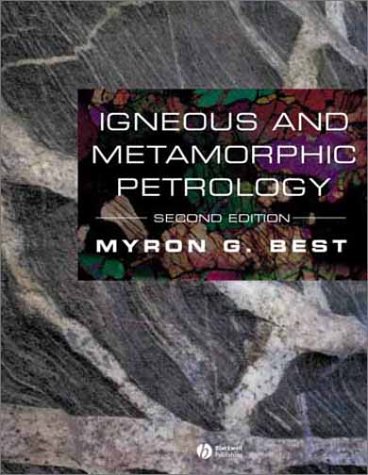
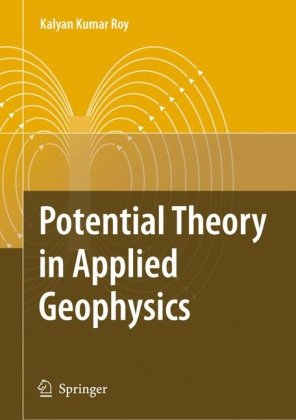
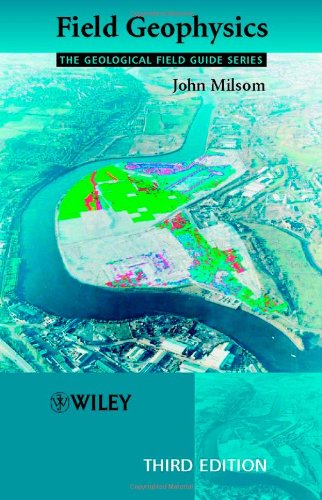
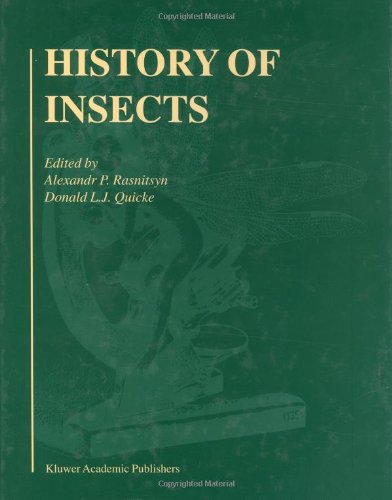
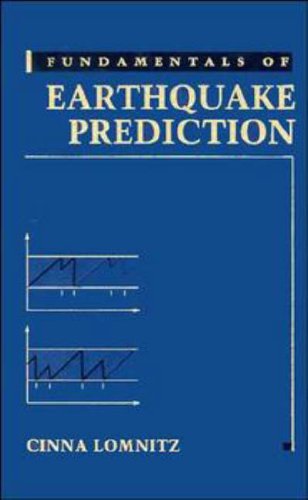
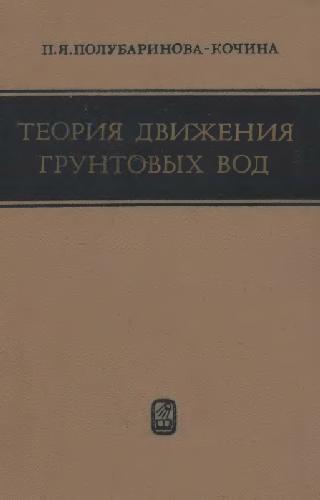
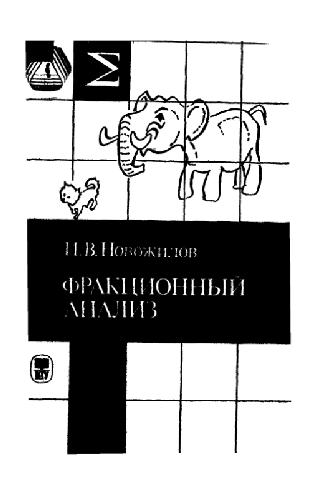
Reviews
There are no reviews yet.